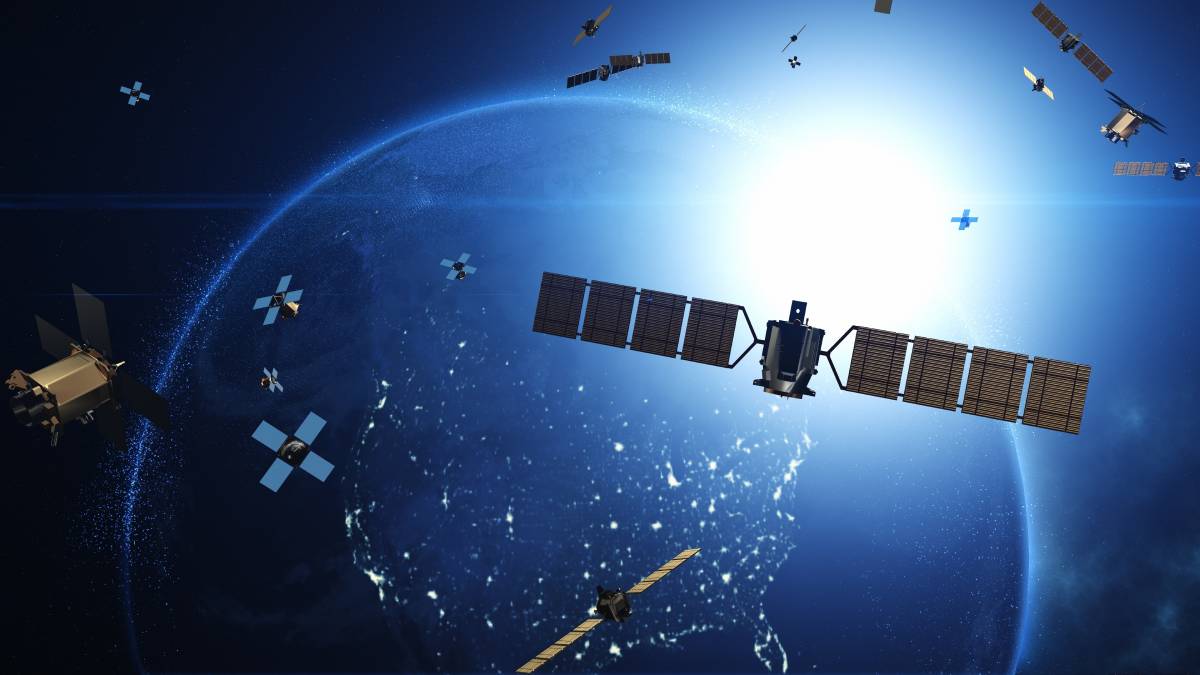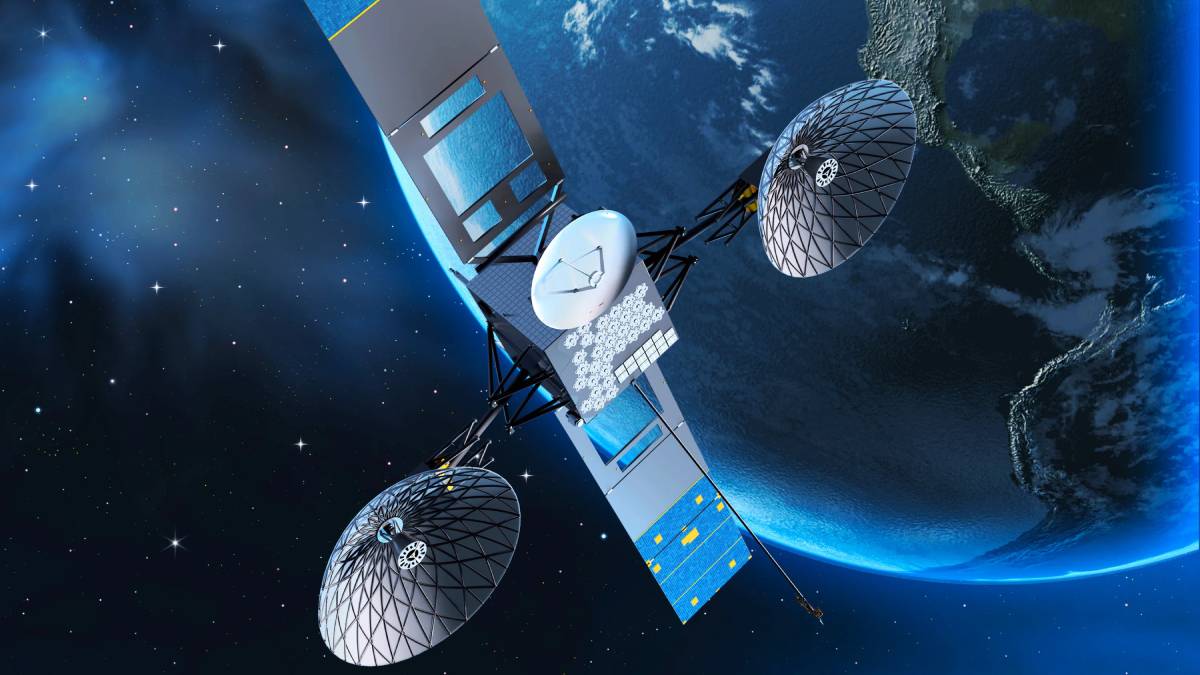
Space missions in near-Earth orbit and Lower Earth Orbit (LEO) satellite constellations have traditionally faced a challenge – their close proximity to Earth results in a small, narrow footprint of coverage area. If this narrow area is directly over one of the Earth’s oceans, an uninhabited location, or another location where ground terminals or teleports are unavailable, the data they need to transmit is traditionally stored until a teleport is within the footprint.
Historically, this was a problem faced predominantly by government agencies and military organizations. Agencies like NASA couldn’t wait for their near-Earth space missions to be over a teleport to relay mission-critical data and communications. That data needed to be transmitted immediately to ensure real-time communications with those in orbit. The same thing could be said for the military, which needed access to intelligence from Earth-imaging satellites in real time to make data-driven decisions.
But this is no longer just a government problem. The past decade has seen significant change and advancement in the satellite industry. LEO has become crowded with the proliferation of new communications satellite constellations. It also now contains a growing ecosystem of Earth observation satellites that generate data about our planet. That data is then sold to companies across numerous industries that need it to gain actionable insights for essential business decisions.
Waiting for a satellite to travel over a terminal or teleport is no longer feasible for these satellite companies much in the same way that it is unacceptable for NASA and military missions. Any delay in the transmission of communications can have a drastic, negative impact on the performance of modern technologies. Delays in the transmission of earth imaging data mean the data is no longer as up-to-date and accurate as users would like.
Luckily, there is an established solution - space data relay.
Space data relays involve transmitting data and signals from one satellite that is not over a terminal or teleport to another that is. This satellite can then send the data to the ground immediately without any additional delay.
As Eric Gunzelman of SES Space & Defense explained, “Sensing satellites at LEO can use [space data relay] capabilities…to deliver data to those who need it on Earth with incredibly low latency. This means that they’re receiving imagery from space in almost real-time.”
This is why we’re starting to see a renewed and increased focus on space data relay.
Industry and Government Explore Relay Options
The need for space data relay can be seen in strategic investments and innovations happening across the public and private sectors.
Within the private sector, numerous companies are investing in space data relay capabilities that they either plan to use themselves or sell to others. This includes Starlink, which announced during this year’s SATELLITE Show in March that it would be selling access to the optical terminals onboard its LEO satellite constellation, capable of passing data between satellites in space at the speed of light.
Earlier this month, Kepler, demonstrated a dedicated satellite relay constellation that it coined the Kepler Network. According to the company’s CEO and Co-Founder, Mina Mitry, this network will, “…act as a data transport layer, bringing modern Internet capabilities to space through an interoperable architecture that will revolutionize space communications as we know it.”
 An illustration depicts a NASA Tracking and Data Relay Satellite (TDRS) orbiting Earth. (Source: NASA)
An illustration depicts a NASA Tracking and Data Relay Satellite (TDRS) orbiting Earth. (Source: NASA)
Simultaneously, NASA, which has long relied on the U.S. Tracking and Data Relay Satellite System (TDRSS) to relay data for its near-Earth space, is working to encourage its industry partners to develop space data relay capabilities. The agency has awarded six different companies the Communications Services Project (CSP) contract to “…develop and demonstrate space-based relay services for NASA missions.”
While space data relay is an increasingly hot commodity, numerous different approaches and technologies can be used to transmit data between satellites.
Some approaches, including the Kepler and Starlink examples, utilize optical communications to transmit data between satellites in orbit. Others, including some of the approaches being developed for the NASA CSP contract, leverage traditional RF communications. But what is the difference, and which is more effective?
Optical vs RF
Of the six companies awarded the CSP contract, four—including SES Space & Defense, ViaSat, Telesat, and Inmarsat—intend to demonstrate relay capabilities that utilize traditional Ka-band, L-band, and C-band RF signals. These capabilities involve LEO satellites and space missions transmitting data to other LEO, MEO or GEO satellites, which can then be relayed to Earth via RF communication.
However, the other two CSP awardees intend to demonstrate an optical solution. This is also the technology that constellations such as Starlink, Kuiper, and others have been integrating into their satellites.
Optical communication leverages lasers between satellites in the same orbit, or even in different orbits, to transmit data. That data can then be transmitted back to Earth via RF signal. Proponents of optical communications are quick to highlight its benefits, which include the ability to send more data in a shorter period of time.
“With optical relay, the big advantage is simply the higher data rates. We offer thousands of gigahertz of bandwidth per channel,” explained Tim Deaver, the Vice President of Global Sales and Solutions at Mynaric, a manufacturer of laser communication equipment for airborne and spaceborne communication networks. “The ability to deliver a gigabit per second, or 100 gigabit per second, gives us a massive advantage. There are even plans to go to terabit per second data relay.”
With the potential to transmit such a significant amount of data with pinpoint accuracy, optical relay would seem like the clear choice for space data relay in the future. So, why are some companies still looking to leverage RF signals for space data relay? Ultimately, it comes down to cost, prevalence, and standards.
According to Deaver, optical communication is still nascent, evolving, and gaining adoption. This means optical terminals for spacecraft are just starting to become affordable and prevalent in space.
“The prevalence of optical terminals on spacecraft and the costs have been prohibitive up until the last few years,” Deaver claimed. “But investments from the public and private sectors in optical data relay have managed to productize the optical capability.”
This means that some of the older Earth imaging satellites in LEO and near-Earth space missions may not be equipped with optical terminals, making optical data relay an impossibility. It also means that many of the satellites in orbit today do not have optical terminals, drastically limiting the ecosystem of satellites that can be used as relays.
RF communication is the tried-and-true solution for transmitting data in space. Practically all satellites already have RF terminals equipped. Even with optical communications technology coming down in price and being installed on newer spacecraft, the prevalence of optical terminals in space is dwarfed by the prevalence of RF.
Also, since optical communication from space to ground is still in its infancy, most data passed between satellites via optical link will invariably be sent to the ground via RF anyway.
While the idea of beaming data between satellites in space with lasers is incredibly attractive and futuristic, the need for backward compatibility means that RF relay is still needed. The future might be optical, but RF relay is a necessary bridge from the present to that laser-enabled future.
Explore More:
The Road to Interoperability: Standards Aren’t Just for IP. The Optics on Optical
‘Fight, Run or Partner’: How Regional Operators Can Adapt to Starlink Competition
Podcast: Spectrum Sharing, Laser Networks and Open Access
Planet To Leverage NASA Contract With SES, Telesat To Add RF Inter-Satellite Links to Its Pelican High-Res Satellites
